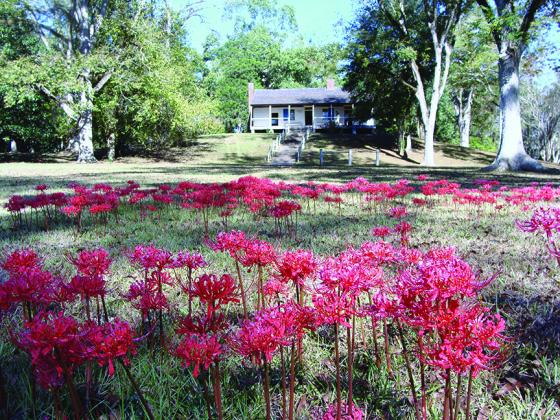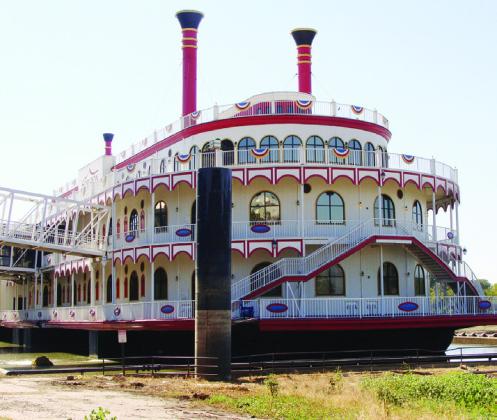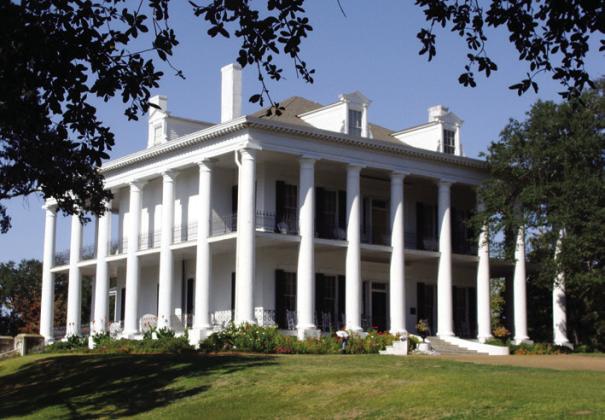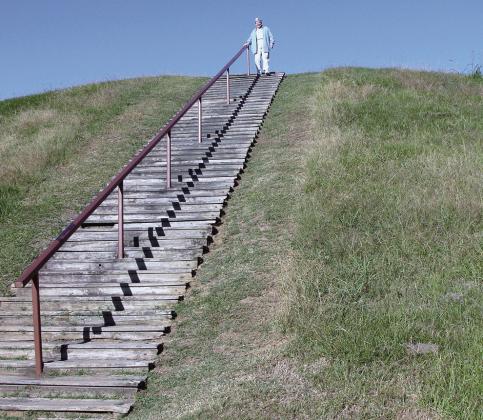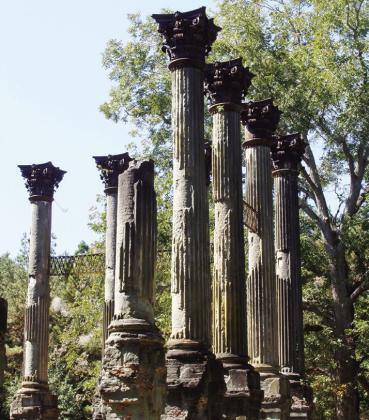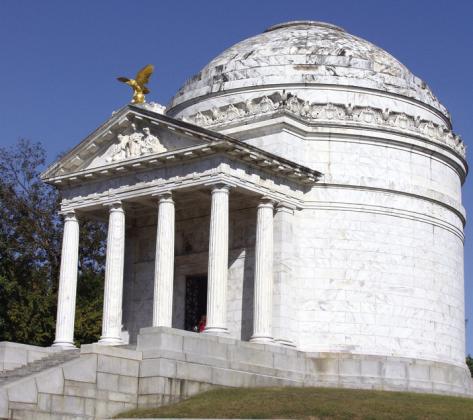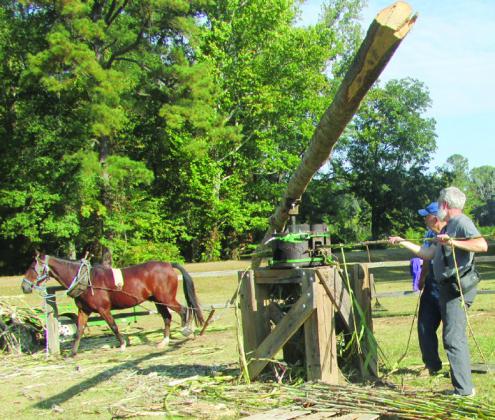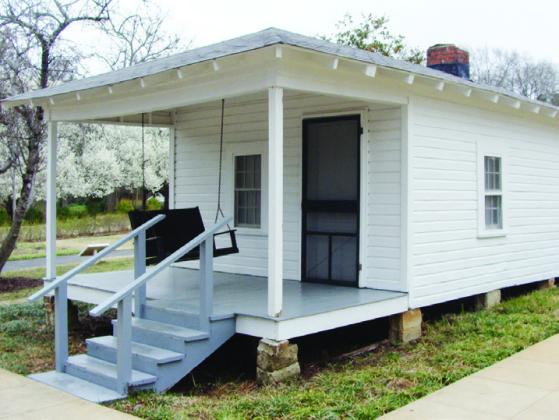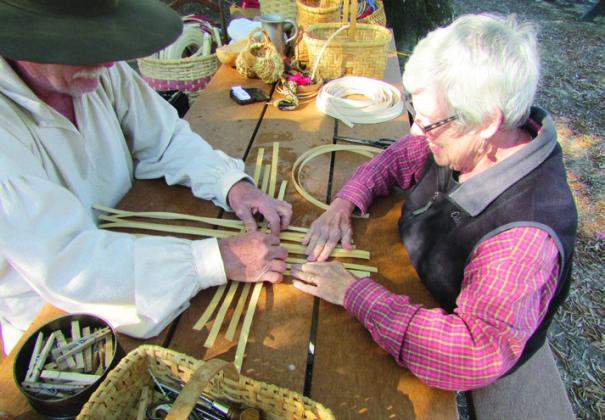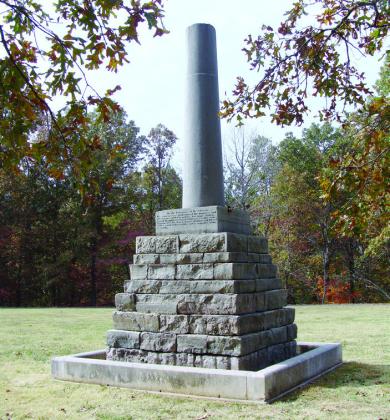SHIRLEY AND I TOOK ADVANTAGE OF AN EXCEPTIONALLY PLEASANT DAY by adjourning to the swing under our pergola. A neighbor stopped by to share an adult beverage. He is hoping to retire at the end of this year if his 401(k) slows its descent. Knowing that we spent last winter in Florida, he was interested in places we like there, especially beaches. There are hundreds of nice beaches in Florida but many of them are famous for catering to people more interested in various forms of debauchery than in the quiet seclusion we prefer.
He listened patiently, thanks to a refill, as we told him that from Florida, we headed to Cajun Country in Louisiana before continuing north via the Natchez Trace Parkway. He was not familiar with the Trace. This was somewhat surprising. We have driven the Trace at least once a year since 2010, so I thought I had mentioned it in these columns so often that readers must be getting bored with it by now. Records show, however, the last full column about the Trace was in 2016. You may have misplaced your file copy so here’s a recap.
From about 1785 until the 1820s, Americans who lived west of the Alleghenies and Blue Ridge mountains had a problem. If they were fortunate enough to have a successful year, how would they get their products to market? Roads back then were crude, poorly maintained, and dangerous. Mountain roads were not suitable for the transportation of goods in heavy wagons and totally impassable when the weather was bad. In other words, they were a lot like roads in Toledo today.
So, farmers and merchants in the Ohio River Valley loaded their cargoes on flatboats and let river currents carry them down to the markets in Natchez, Mississippi or even as far as New Orleans. Floating down was relatively easy. Paddling a flatboat back against the current was impossible. The solution was to sell the boats as lumber and then walk or ride north again. An old trail called the Natchez Trace, used by Indians for 10,000 years, ran from Natchez to Nashville. From there travelers could connect with other roads to get back to their place of origin.
It was never an easy trip. To begin with, it is about 450 miles from Natchez to Nashville plus the additional mileage to wherever you had started from. So, you had better be really fond of walking or prosperous enough to ride a horse. But riding a horse was a clear indicator to organized bands of thieves that you must be worthy of their attention. If traveling with well-armed and assertive companions, you might escape the robbers, but there is no record of anyone ever escaping the mosquitoes, ticks, and chiggers. There were no Hampton Inns, but eventually there were 20 “stands” where you might rent a bed or, more likely, half a bed, and get a meal. Otherwise, you had better just get used to sleeping on the ground. And in the rain.
After steamboats replaced flatboats in the 1820s, cargo and passengers could travel faster and easier. The old Natchez Trace fell into disuse until 1938 when the federal Natchez Trace Parkway was begun on the same principles as the better-known Blue Ridge Parkway along the spine of the Appalachians. The Trace is a recreational route, closed to commercial traffic, that passes through gently rolling fields and forest. In places, farm land comes right up to the road. The speed limit is 40 to 50 mph, and there are no utility poles or billboards to detract from the scenery. The Blue Ridge, admittedly, offers more spectacular vistas, but the Trace has charms of its own. Deer and wild turkeys, hawks and song birds, cattle and horses. It is popular with bicyclists because the traffic is very light, the hills are relatively easy, and there are cyclist-only campgrounds along the way.
Shirley and I have traveled the Trace on our way home from winters in Arizona and Florida and several more times for its own sake on shorter trips in spring or fall. There are some places we look forward to revisiting and others we have still not gotten around to for one reason or another. There are hundreds of things to see and do with still more attractions just a few miles off the Trace. Even retirees don’t have time to see everything the Trace has to offer in the way of scenic, cultural, or historical interest.
The Natchez Trace Parkway officially begins, as it did for the boatmen, at Mile Post 0 in Natchez. From Ohio, you may be more likely to drive it north to south beginning just outside Nashville at MP 444. Traveling either direction, we recommend a spring trip for the wildflowers, redbuds, dogwoods, azaleas, cherry and pear trees in bloom, plus the glorious gardens at antebellum mansions. In the fall, there is lower humidity and generally comfortable weather with less risk of rain. We have stayed at all three national park campgrounds and at three state parks, two Corps of Engineers, a national forest, and Grand Gulf Military Park. It is nice to have options because campgrounds tend to fill up on weekends, during the Spring and Fall Pilgrimages, and during the annual Natchez hot air balloon race. But you might prefer to hotel it or, better yet, stay in beautifully restored antebellum mansions that offer B&B accommodations.
a Greek-Revival mansion begun in 1841, is part of the Natchez National Historic Park. Ranger-led tours explain the history of the house and its furnishings. (What, for example, is a punka?) Full tours may be available again by the time you read this. They were suspended during COVID and this March were still offered only in a severely truncated form. Instead of an hour or more in the house they were offering a 30-minute tour that included only 15 minutes in the house and 15 minutes on the grounds and out-buildings.
Fortunately, if you enjoy historic house and garden tours, Melrose is far from the only option. In 1850, half the millionaires in the US lived in Natchez, and they lived like the equivalent of billionaires today. Back then, conspicuous consumption was considered a virtue. Over the years, we have visited more than a dozen and are especially impressed by Longwood, Stanton Hall, and Dunleith. During the annual Spring and Fall Pilgrimages there are typically 30 historic houses open for tours. Some are owned by organizations such as the Garden Club or Daughters of the American Revolution. Some are now operated as upscale B&Bs. Many are privately owned, occupied by descendants of the original owners, and open to the public only during the Pilgrimages. Think of the Pilgrimages as somewhat more opulent versions of the Old West End Festival in Toledo
is an eight-acre, 35-foot-high Indian earthen ceremonial platform built about 600 years ago. A trail leads to the top of a secondary mound at one end that rises higher still. A climb to the top is doubly impressive when you consider that the earthwork was carried by hand without the benefit of Caterpillar or John Deere. Elsewhere on the Trace are burial mounds dated by archaeologists to about 2,000 years ago. Though Emerald Mound is huge, Bynum Mounds at MP 232 and Pharr Mounds at MP 286 look more like the little bumps you encounter as obstacles on the golf course. Only the trained eyes of archaeologists would have noticed them in the first place.
is the only original inn left on the Trace, though there are “sites” where you can admire the places they would be if they were still there. We met a ranger who said he was born at the stand as a fifth-generation descendant of the original owners. Take a walk through the grounds and perhaps a short stroll on the Old Trace itself. In spring, a great swath of bright red spider lilies blooms out front.
While you are in the neighborhood, have lunch or supper at the Old Country Store in Lorman, MS where Mr. Arthur Davis makes the best fried chicken you ever put in your mouth. Mr. D and our favorite waitress, Erica, entertain with impromptu, a capella, table-side singing. Shirley blushes when he sings “Sugar Pie, Honey Bunch” to her.
Just west on Rt. 552 are the Windsor Ruins. The stately mansion survived the Civil War because it was used as a Union hospital but was burned to the ground in 1890 when a guest left a lighted cigar on the balcony. The ornate Corinthian columns, like ancient
MP 88: Exit for Vicksburg at I-20 for an easy half-hour drive to antebellum mansions such as Cedar Grove where a Civil War cannon ball is still embedded in the parlor wall. Like Natchez, Vicksburg has Spring and Fall Pilgrimages with house tours. The Fall Pilgrimage in both cities is quite pleasant, but you may prefer the grandeur of the gardens in the spring when the magnolias, azaleas, and camellias are in bloom.
Vicksburg also offers Civil War Living History in May and July. (On July 4, 1863, the city capitulated, ending the siege by U.S. Grant.) The National Military Park is similar to Gettysburg where a Union victory occurred simultaneously with that in Vicksburg. Ohio regiments, not to mention Ohio Generals Grant and Sherman, played critical roles in the Union victory at Vicksburg that split the South in two and helped end the war.
MP 122: Pierre LeMoyne, French explorer, sailed into the mouth of the Pearl River here in 1698 and named it for what he found. Today, the freshwater pearls are mostly gone but the picturesque bald cypress swamp remains. Louis XIV appointed him Governor-General of the Louisiana territory in an effort to extend French colonies all the way from Canada to the mouth of the Mississippi and block the westward expansion of the British. Pierre’s brother Jean-Baptiste LeMoyne was the founder of New Orleans. At MP 243 is the site where Hernando de Soto spent the winter of 1540-41 as part of the Spanish exploration of the New World. Louis evidently concluded that the Spanish failure to show up again for 150 years voided any claim to the area. There is no record of Louis consulting the Indians in the matter.
established by Louis LeFleur as a stand in 1812, is now essentially a pioneer farmstead with living history demonstrations. In October, for example, syrup is made from sorghum canes. One year they invited me to feed canes into the horse-powered mill. The trick is to not let the lower end of the revolving beam bonk you on the head as it swings around behind you. (Don’t ask how I know this.) The juice is boiled down over a wood fire, like maple syrup, to less than a tenth of its original volume.
There is a nice restaurant and small gift shop at the Camp and a pottery shop out back. Proceeds from pottery and other activities at the Camp support the residence and school operated for about 175 children who are given a refuge from abusive home environments.
in Tupelo, MS is technically not on the Trace, but it is close enough for any fan. In addition to the family house (far more humble than Graceland but not nearly as tacky) and the museum, there is also the church where young Elvis learned to sing the gospel melodies he later recorded and performed in concerts. Also an antique car museum.
MP 266: At Trace Visitor Center, they were holding Pioneer Days demonstrations by people in period costumes when we were headed north after a fall trip to Natchez. A pioneer “hunter” had samples of various animal pelts—bear, deer, buffalo, beaver, and mink. Mother and daughter quilters were working on Apple Core and Arkansas Crossroads patterns. A dulcimer player sang traditional melodies. J.D. taught Shirley to weave a basket—which is easy to do crudely and difficult to do well. I think hers turned out nicely.
Right at the Alabama-Mississippi state line, pull over to get a close-up look at the cotton fields when the bolls are bursting open in the fall.
MP 332: Shiloh National Military Park is a short drive west. You might then continue to the Corinth Civil War Interpretive Center before looping back to the Trace. There are numerous Civil War sites all along the Trace. Shiloh is where both sides found out that victory would not come quickly and with little bloodshed. (There were 13,000 Union casualties and 10,000 on the Confederate side.) Grant and Sherman became heroes there, and Confederate General Albert S. Johnston lost his life.
MP 386: Meriwether Lewis’s grave at Grinder’s Stand is where the leader, with William Clark of the Corps of Discovery, died in 1809 under suspicious circumstances. Was it suicide or murder? The story is way too complicated to go into here, but history buffs may wish to read up on it. We always stay at the national park campground there. It is worth way more than the price. (As at Rocky Springs and Jeff Busby, the other national park campgrounds, the price is $0.)
MP 401: The Old Trace is a twomile spur from the Parkway that lets you drive a section of the original road. The Parkway is for driving slowly. The Old Trace section is for driving slower still. This section is one-way south to north. There are numerous other stops on the parkway marked with signs to sections of the Old Trace where no vehicle traffic is allowed—or physically possible. Take a little walk along at least one to get a feel for what it was like. Bear in mind that the foot path has not been “improved” like trails in city parks, so don’t wear your dress shoes.
MP 404: Jackson Falls named for Andrew Jackson. A 900-foot trail descends steeply to the base of the falls. In autumn, it is barely a trickle. In spring, it is also barely a trickle, but the wildflowers and flowering trees tend to compensate for that. This is where Old Hickory mustered his troop for the march to New Orleans in 1814. At MP 426 is the War of 1812 Memorial erected to honor the soldiers going to and returning from the battle via the Trace.
Whether spring or fall, Shirley says Natchez is quite nice, but we would be lost without a Trace. The drive itself is the thing. Most days we go less than 100 miles because stopping frequently along the way makes it just a walk in the park.
LeMoyne Mercer is the travel editor for Healthy Living News. If you are contemplating a trip, you might want to see photos and information about numerous destinations at AnotherWalkInThePark.blogspot.com. ✲

